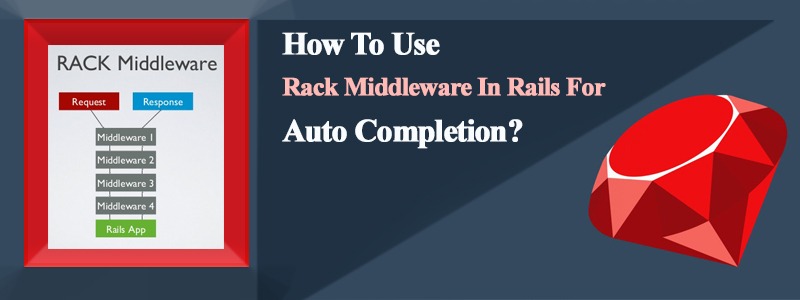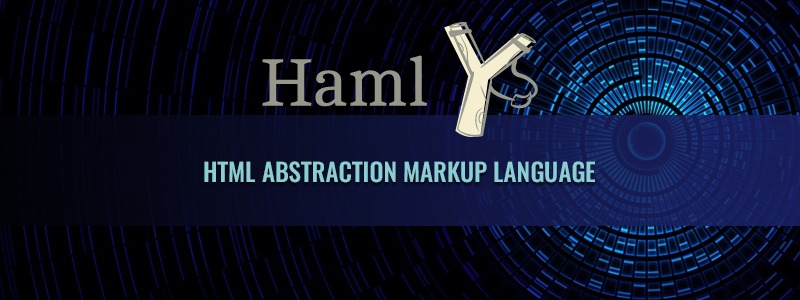In today’s modern web applications auto completion/ auto suggestions are very common right from a small to very large applications, serving up multiple requests simultaneously with quick response from the server is very important to make the user experience better and enjoyable.
Here is where rack middleware comes in the picture.
What is Rack Middleware?
In simple terms, a Rack middleware allows us to do things before or after in a rack application. Rack middleware is initialized using a rack application and should respond to a call method.
Rack middleware can further hand over the control to other rack middleware or just respond back with a response code, content-type and body.
1 [200, {‘Content-type’ => ‘text/html’},[‘Hello Web’]]
How can you use this in a Rails Application?
Rails already has a predefined set of Rack middlewares for caching, session handling etc, you can look at the current middlewares by running rake middleware.
Apart from this Rails also provides a great way to add your own Rack middleware to your application. Using a Rack middleware to handle auto completes is great, as it gives you a slight performance boost as compared to handling the request in a Rails controller.
So lets look at some code as to how to achieve this. Requirement – User should be authenticated – Respond with json with the result of the query – Handle the response on the client side with javascript.
Ruby Rack Middleware-Make a directory for middlewares in your rails application mkdir app/middleware.
Make a new file app/middleware/auto_completer.rb class AutoCompleter def initialize(app) @app = app end def call(env) @request = Rack::Request.new(env) if env[“PATH_INFO”] == “/autocomplete” session = @request.env[‘rack.session’] params = @request.params if session && session[“user_id”].present? users = User.select(“id, name”).like(params[“q”]) [200, {“Content-Type” => “application/json”}, [users.to_json]] else [404, {“Content-Type” => “text/html”}, [“Not Found”]] end else @app.call(env) end end end.
The above code is initialized with a instance of rack application, then handing the control to the call method. In the call method we check if the request path matches autocomplete, We then check the session and find matching users and return a json with a 200 response.
If the request does not match the autcomplete request path we hand over the control to the other rack middleware. Edit your config/application.rb to configure Rails to pick up the new middleware
config.middleware.insert_after ActionDispatch::Session::CookieStore, “AutoCompleter”
This tells rails to insert the new middleware we have made after the session middleware. Run the command again to see you can see the new middleware got added after
ActionDispatch::Session::CookieStore rake middleware
Start your Rails server and goto localhost:3000/autocomplete?q=h
Expected Response [{“id”:2,”name”:”Harry”},{“id”:4,”name”:”Harold”}]
Javascript We will be using jquery-ui plugin for autocompletion. Include jquery-ui in assets/javascript/application.js
Add JavaScript to assets/javascript/application.js to make the autocomplete request
$(function() { $.ui.autocomplete.prototype._renderItem = function (ul, item) { label = item.name.replace(new RegExp(“(?![^&;]+;)(?!<[^<>]*)(” + $.ui.autocomplete.escapeRegex(this.term) + “)(?![^<>]*>)(?![^&;]+;)”, “gi”), “$1“); return $(“
- “) .data(“item.autocomplete”, item) .append(“” + label + “”) .appendTo(ul); };
$( “#autocomplete” ).autocomplete({ source: function(req,res){ $.getJSON(“/autocomplete”, { q : req.term }, res) }, minLength: 1, select: function( event, ui ) { $(“#selected”).append(” Id: ” + ui.item.id + ” Name: ” + ui.item.name + “”); } }); });
The first piece of code patches the _renderItem method in jQuery-ui auto complete plugin to use the json format we are sending from the server.
The second part is pretty straight forward where we hook the auto complete call to a html element id in the DOM.
Notice we have used “q” as the name of the query parameter instead of the default “term” parameter.
Rails Controller and View
Generate a new controller scaffold rails generate controller dash index
Edit a new template dash/index.html.erb
Todo App
<
p>Autocomplete
<?php
= text_field_tag :user_id, nil, :id => "autocomplete" -
?>
Start the server and goto http://localhost:3000/dash
Get in touch with us.



